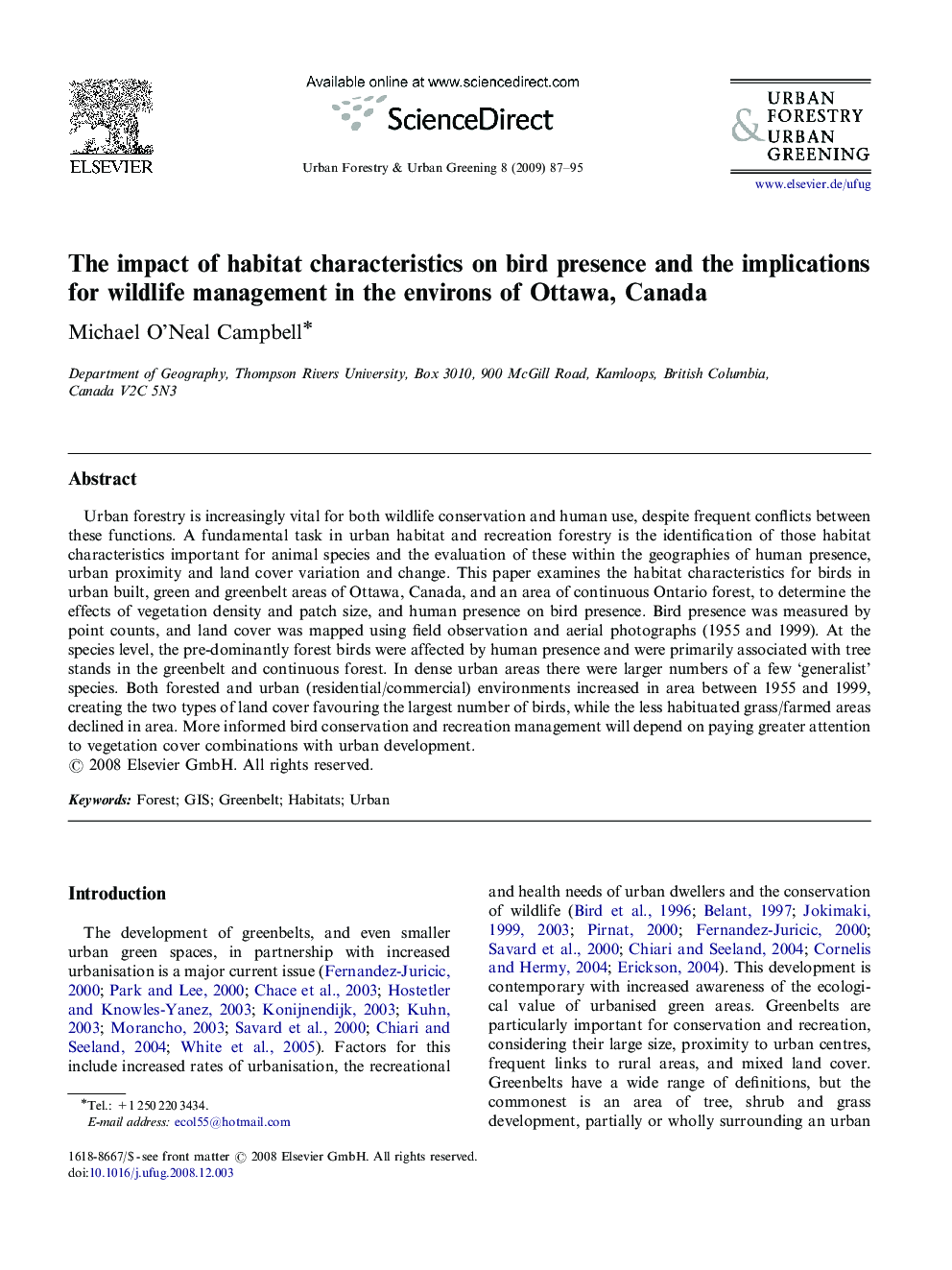| Article ID | Journal | Published Year | Pages | File Type |
|---|---|---|---|---|
| 94177 | Urban Forestry & Urban Greening | 2009 | 9 Pages |
Urban forestry is increasingly vital for both wildlife conservation and human use, despite frequent conflicts between these functions. A fundamental task in urban habitat and recreation forestry is the identification of those habitat characteristics important for animal species and the evaluation of these within the geographies of human presence, urban proximity and land cover variation and change. This paper examines the habitat characteristics for birds in urban built, green and greenbelt areas of Ottawa, Canada, and an area of continuous Ontario forest, to determine the effects of vegetation density and patch size, and human presence on bird presence. Bird presence was measured by point counts, and land cover was mapped using field observation and aerial photographs (1955 and 1999). At the species level, the pre-dominantly forest birds were affected by human presence and were primarily associated with tree stands in the greenbelt and continuous forest. In dense urban areas there were larger numbers of a few ‘generalist’ species. Both forested and urban (residential/commercial) environments increased in area between 1955 and 1999, creating the two types of land cover favouring the largest number of birds, while the less habituated grass/farmed areas declined in area. More informed bird conservation and recreation management will depend on paying greater attention to vegetation cover combinations with urban development.
